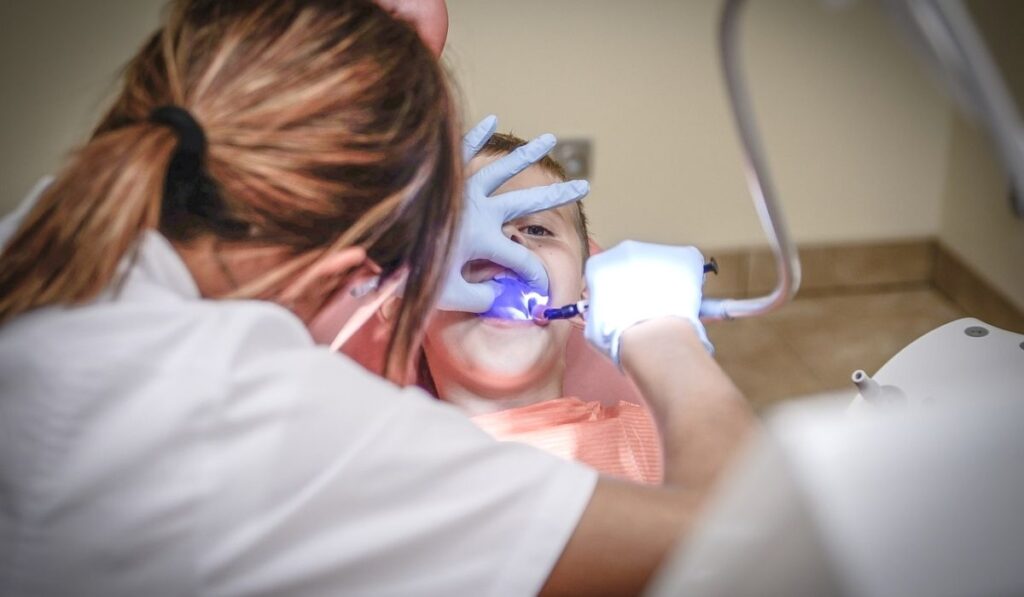Modern Pediatric Dentistry is a specialized field of dentistry, founded on the latest advances in oral health sciences and technology. With a holistic approach to dental care, the aim is to ensure that your child enjoys the best possible oral health with minimum discomfort. In order to make this happen, pediatric dentists use several techniques to make sure that their patients are comfortable during treatment

What Is Sedation?
Sedation is a procedure where the patient is put to sleep but is able to breathe on their own. Patients who are in pain and unable to tolerate the pain are given sedation.
Types of Pediatric Sedation
In children, there are four common types of sedation. These include general anesthesia, conscious sedation, sedation for procedures and diagnostic tests, and sedation for diagnostic imaging.
General anesthesia is the most extreme form of medical treatment. It’s when your child is completely under the influence of medication (called an “anesthetic”) so they feel no pain while having surgery or another procedure performed. Conscious sedation is less intense than general anesthesia but still requires an anesthesiologist to monitor your child during the procedure or test. It can be given by either oral (through pills) or intravenous (through injection into a vein) methods at the hospital or doctor’s office prior to beginning whatever process your child needs to undergo. Sedatives can also be used in conjunction with general anesthesia if needed to help calm nerves before going into surgery or other procedures that require full unconsciousness from fearfulness about what might happen during those moments when someone else has control over whether something will hurt them physically/emotionally/mentally etcetera.
This type of practice includes: administering medications orally before arriving at our facility; administering medications intravenously once we reach our destination; monitoring breathing rates throughout this process; especially since some kids may experience rapid breathing rates due to anxiety about being away from home without their parents around — making sure all vital signs remain normal until after completion; administering injectable medications through syringe if needed during testing procedure time frames which could last anywhere between 15 minutes up
Conditions for Which Sedation Is Given
Conscious sedation is given to children to help them relax so that they can be comfortable during the procedure. It works by taking away some of the physical sensations of anxiety. When you’re conscious, you know that something’s happening—you just don’t feel it as much.
This type of sedation is usually used for children who are between 6 months old and 12 years old, but every child is different and there may be other reasons to use it on older kids or younger ones as well. Conscious sedation can also be used in adults if they have trouble relaxing or being still during a procedure like an MRI scan or a surgical dental implant procedure.
Besides helping with discomfort, this form of sedation lets your child stay awake while staying calm—so they’ll still be able to talk with you throughout the procedure instead of falling asleep!
The Process of Sedation
You must be aware of the process of sedation.
The duration of the process is 10-15 minutes. Sometimes, you may have to wait for an hour before your child can be wheeled into the operating room (OR).
Your child will be given a mask that contains anesthetic gases. The gas is administered by a trained nurse who will follow up with monitoring during the procedure. Infants are usually sedated with nitrous oxide gas and oxygen, while older children may need inhaled medications such as propofol or ketamine instead of nitrous oxide gas alone for their comfort level during the surgery.
Benefits of Conscious Sedation
Conscious sedation can be administered to children of any age. Patients who undergo conscious sedation will not be unconscious but feel very relaxed and comfortable. You may have heard that some prior procedures require anesthesia, which means your child would have been put to sleep for the duration of the procedure. In these cases, we would never use anesthetics in combination with conscious sedation because it could cause complications such as respiratory depression or cardiac arrest—which is why it’s important to consult with your doctor about what type of anesthesia is best for you or your child. The benefits of conscious sedation include:
- The patient remains awake throughout the procedure and can interact with parents and medical staff;
- Allows patients to go home after treatment instead of staying overnight in a hospital;
- Provides comfort during dental treatment;
The Risks of Conscious Sedation
The risks of conscious sedation are very small. The most common risk is a sore throat after the procedure, which can be helped by drinking clear liquids and by taking pain medication as prescribed. There is no long-term risk from the sedation or from being asleep during the procedure.
If you are concerned about the risks of sedation, talk to your doctor about them before your child has an exam or procedure that requires conscious sedation.
It is an alternative for children with anxiety disorders and stress!!
It is an alternative for children with anxiety disorders and stress! It helps the child to relax and feel comfortable. It also helps the child to be more cooperative.
It is an option for parents who want their child to be relaxed and comfortable before a procedure or surgery, but who do not want to use sedation drugs such as anesthesia or narcotics.
The Bottom Line
Sedation is an excellent alternative for children with anxiety disorders and stress. It can also be used for dental procedures, where you need your child to remain calm during treatment time. The process involves giving a medication that will induce sleepiness or relaxation in the patient’s body.
